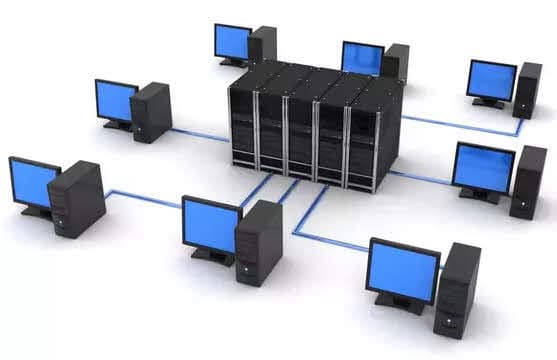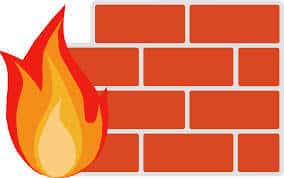In this post, I am going to talk about the 10 computer networking concepts that every professional should master. I will also include links to the main articles of each concept. So, let’s start with some definitions:
1. Network Topology
The word “topology” comes from topos, which is Greek for «place». In computer networking, TOPOLOGY is the physical layout of computers, cables, switches, routers, and other components of a network. This term can also refer to the underlying network architecture, such as Ethernet or Token Ring.
When you design a network, your choice of topology will be determined by the size, architecture, cost, and management of the network. Basic network topologies include the following:
- Bus Topology
- Ring Topology
- Star Topology
- Mesh Topology
- Tree Topology
- Hybrid Topology
To learn more please feel free to read our main article: Network Topology.
2. Local Area Network / Wide Area Network
LAN stands for Local Area Network and WAN stands for Wide Area Network. A network is any group of computers (servers and workstations) and devices, like smartphones and printers, that are connected together and able to communicate with each other.

So, LAN is the local network, network devices connected together within the same geographic location. A WAN connects LANs to each other, usually across multiple locations as well as individual devices that connect from a remote distance.
A WAN may be limited to an enterprise (a corporation or an organization) or accessible to the public. The internet is an example of a worldwide public WAN.
3. The OSI Model
OSI Model is a short name for the Open Systems Interconnection reference model for networking.
This theoretical model explains how networks behave within an orderly, seven-layered model for networked communication. The OSI model isn’t specific to a protocol suite and can be applied to most networking protocols past and present.
7 Layers OSI Model
- Layer 1 – Physical Layer
- Layer 2 – Data-link Layer
- Layer 3 – Network Layer
- Layer 4 – Transport Layer
- Layer 5 – Session Layer
- Layer 6 – Presentation Layer
- Layer 7 – Application Layer
To learn more about this concept read the main article: OSI model.
4. Network equipment (routers and switches)
Network equipment includes a broad range of devices which can be classified as core network components that interconnect other network components, hybrid components which can be found in the core or border of a network, and hardware or software components that typically sit on the connection point of different networks.
The Network Switch allows each connected device to talk to the others.
Router and Switch are both network connecting devices. A router works at the network layer and is responsible to find the shortest path for a packet whereas a Switch connects various devices in a network. A router connects devices across multiple networks. Switch’s main objective is to connect various devices in a network.
5. Physical Transmission Medium (cabling)
Network Cabling is the medium through which information usually moves from one network device to another. There are several types of cable which are commonly used with LANs.
There are two basic types of cabling used in LAN networking environments:
- Copper cabling, which consists of insulated copper conductors that transmit signals using electrical voltages and currents. It can be coaxial cabling, UTP or STP.
- Fiber-optic cabling, which is made of glass strands that transmit signals as light waves or pulses. Fiber-optic cabling can be either single-mode, which is used for the longest cable runs, or multimode, which has a much higher carrying capacity.
Read the main article about network cabling.
6. Wireless networking
Wireless networking is a wireless computer network that links two or more devices using wireless communication to form a local area network (LAN) within a limited area such as a home, school, computer laboratory, campus, or office building.

The IEEE 802.11 has two basic modes of operation: infrastructure and ad hoc mode. In ad hoc mode, mobile units transmit directly peer-to-peer. In infrastructure mode, mobile units communicate through a wireless access point (WAP) that serves as a bridge to other networks (such as the Internet or a local area network).
7. Communication protocols
Communications protocols are a set of rules required to exchange information between computing systems. Like any spoken language, these protocols allow computers to understand each other.
These protocols define the rules, syntax, semantics, and synchronization of communication and possible error recovery methods.
Most common communication protocols:
8. DHCP
Dynamic Host Configuration Protocol (DHCP) is a client/server protocol that automatically provides an Internet Protocol (IP) host with its IP address and other related configuration information such as the subnet mask and default gateway. DHCP allows hosts to obtain required TCP/IP configuration information from a DHCP server.
9. DNS
In short, DNS is a global database system that relates IP addresses with an easy-to-remember name. For computers to communicate, it is essential that each network component has one unique identifier (IP address). But when a human needs to identify a specific network component, it is very difficult to remember something like 101.87.23.122. So, there is a global system called DNS that allows giving a specific name (with some rules attached) to an IP address.
10. Network Security
The last of this list of computer networking concepts is Network security.
Network security is the protection of the underlying networking infrastructure from unauthorized access, misuse, or theft. It involves creating a secure infrastructure for devices, applications, users, and applications to work in a secure manner. See, as examples, the articles about implementing a firewall and what is a VPN.

Just resuming, here are 10 of the most important computer networking concepts: